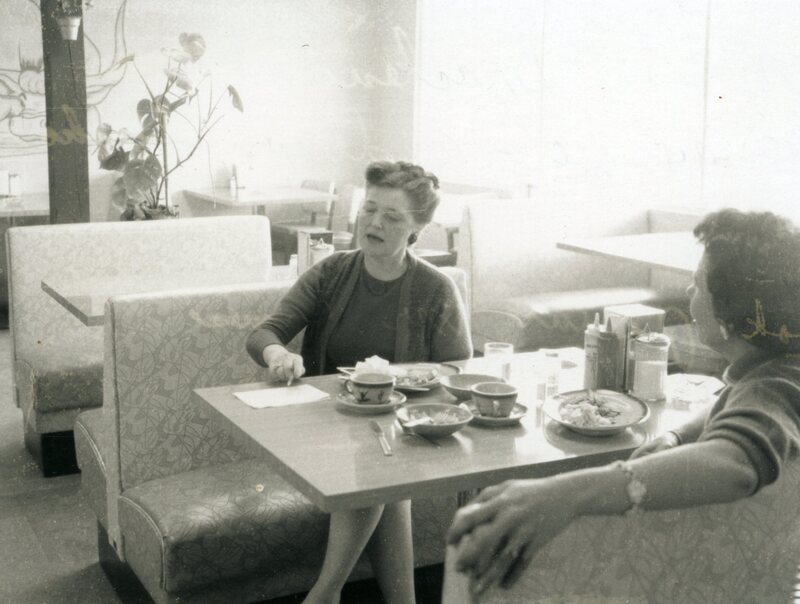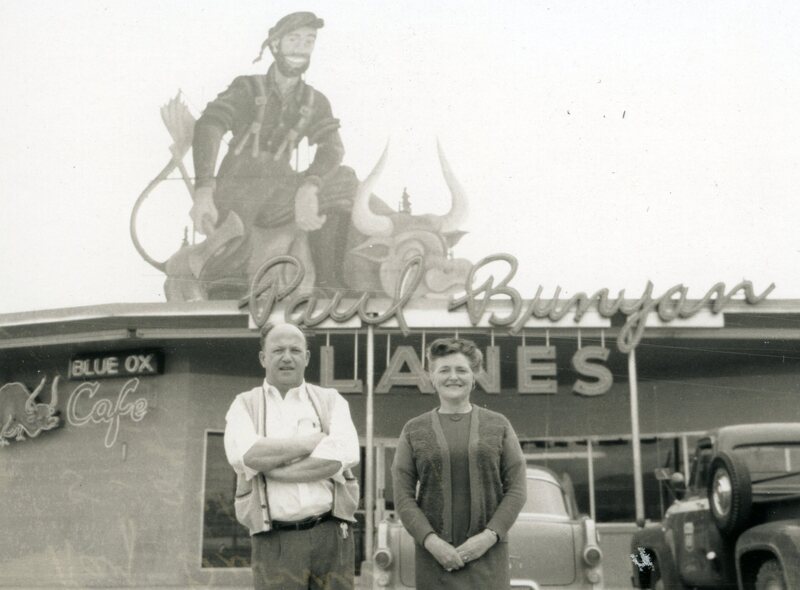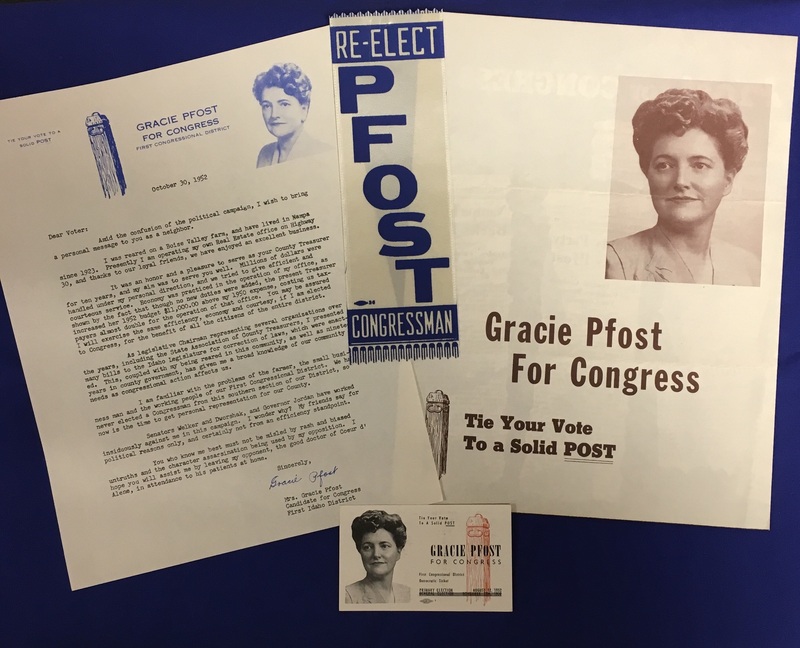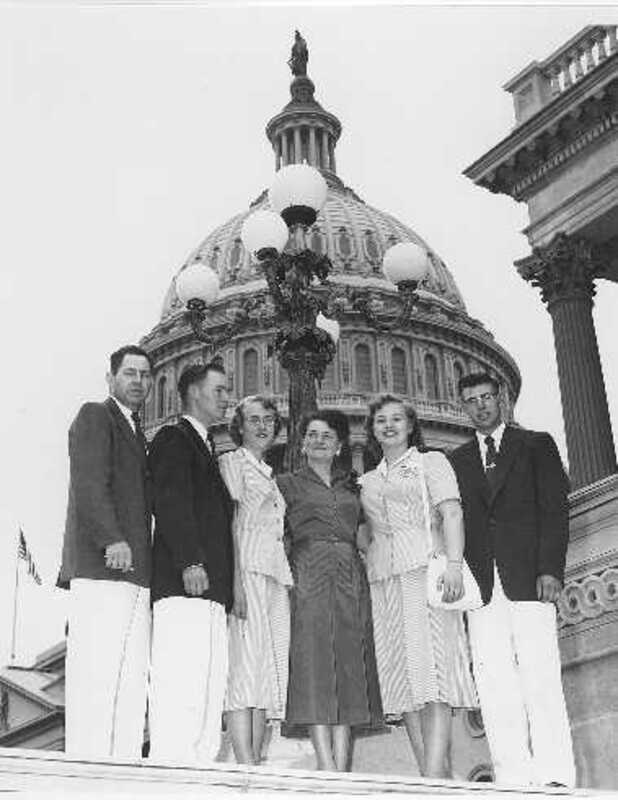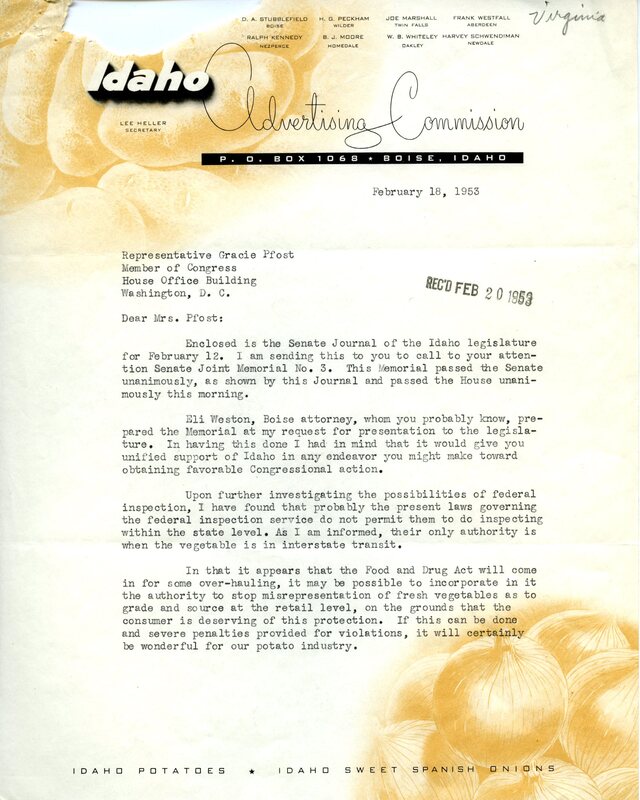This week’s edition of Diverse Collections features the Gracie (Bowers) Pfost Papers, 1950-1962. Pfost was Idaho’s first female member of Congress.
Representing the state’s first congressional district, she was elected to five consecutive terms in the U. S. House of Representatives, ably serving her constituents from January 3, 1953 to January 3, 1963. Described as a “unique and forceful political personality,” Pfost diligently promoted the mining, timber and agricultural interests of the Gem State’s northern counties. In 1962, the Congresswoman declined to run for her sixth term in the House and instead entered the Senate race. Nominated by the Democratic State Central Committee, she lost by narrow margin to Republican Len B. Jordan in the general election. But her career as a public servant did not end. In June 1963, President John F. Kennedy appointed Pfost administrator of Public Housing for the Elderly in the Federal Housing Administration, a position she held until her death two years later.
Born March 12, 1906 in Harrison, Arkansas to William Layfette and Lily Elizabeth (Wood) Bowers, Gracie moved with her family to the Boise Valley in 1911. She attended area schools receiving her secondary education at Meridian High School, Meridian, Idaho, and graduating in 1926 from Links Business University. On August 4, 1923 she married John Walter (Jack) Pfost, a man 22 years her senior, who played an important role in his wife’s later political career. In fact Gracie credits him as the person who most encouraged and supported her campaign for election to Congress. Once Gracie was elected to the House of Representatives, Jack Pfost acted unofficially as the Congresswoman’s political advisor. He worked long hours beside his wife and after his death on July 17, 1961, at the age of 77, it was said of him that his death “cost Idaho an unofficial but effective public servant who was as untiring as he was unassuming.”
Gracie Pfost’s public career began in 1929 when, at age 23, she was appointed deputy county clerk, auditor and recorder for Canyon County. She served the county in this capacity until 1940 at which time she was elected Treasurer. After five consecutive terms as Treasurer, she ran unsuccessfully against Republican John T. Wood in 1950 for a seat in congress. Defeated by 783 votes in that election, Pfost again announced her candidacy in 1952.
With the slogan “Tie Your Vote to a Solid Post–Gracie Pfost for Congress,” she canvased the counties of the first district profiling her campaign issues. She supported stabilization of farm products, improved labor legislation and the production and conservation of domestic minerals and metals. Favoring broader Social Security coverage and reduced taxes, her platform also included support for humanitarian legislation. Of greater significance and one which marked her congressional career, she opposed private interests and championed the federal construction of a high, multi-purpose dam at Hells Canyon on the Idaho-Oregon border. Later, in her first speech before the House of Representatives on April 16, 1953, she introduced the bill to allow the federal government the right to construct a dam on the Snake River. Her vigorous support of the project earned her the sobriquet: “Hell’s Belle.” Throughout her career in the House, Pfost continued to support legislation protecting mining (lead-zinc) and timber interests as well as bills providing for public works and federal aid to education.
In Congress, Pfost was appointed to the House Committee on Interior and Insular Affairs and served on or chaired the subcommittees on Irrigation and Reclamation, Mines and Mining and Public Lands. She was also a member of the House Post Office and Civil Service Committee. She was also named to special subcommittees, one to study water resources and one to investigate Foundations Exempt from Income Tax. In 1960 she was a conference delegate to the Outdoor Recreation Resources Review Commission.
In addition to her political responsibilities, Pfost was a member of the Idaho Federation of Womens’ Clubs, Business and Professional Women’s Club, Soroptimist Club, Gem Area Girl Scout Council, Nampa Chamber of Commerce and the Idaho Real Estate Board. Before election to Congress, she was a delegate to the Democratic National Conventions in 1944, 1948 and 1952. For recreation and relaxation she enjoyed hunting, fishing, and painting.
On August 11, 1965, Gracie Pfost died of Hodgkin’s Disease at Johns Hopkins Hospital near Baltimore, Maryland. With her death “Idaho [lost its] First Lady of Politics.”1
About the Collection
The papers of Gracie Pfost span the years 1950 to 1963, with the bulk of the material covering the years 1953 to 1962. A few of her speeches dating from the 1940s are also included.
The congressional papers include administrative records, such as inter-office memos and mailing lists; constituent correspondence, which is divided into three sections and forms the major part of the collection; general and personal correspondence; legislative material which includes bills introduced by Gracie Pfost, her statements to congressional committees, Congressional Record inserts, and committee files; public relations material which includes her speeches, newspaper clippings, news releases, and audio tapes of radio speeches. The campaign files include campaign material, files of clippings on people, places, or events of interest to her, as well as other political files.
Signatures of well known politicians such as Harry Truman, John McCormack, Frank Church, and John F. Kennedy may be found in some of the folders. Presence of these signatures is noted on the folder itself.
The University of Idaho library also has the congressional papers of Mrs. Pfost’s successor in the House of Representatives, Compton I. White, Jr. (Manuscript Group 93).
Sources
MG 44, box 48, folder 2301


